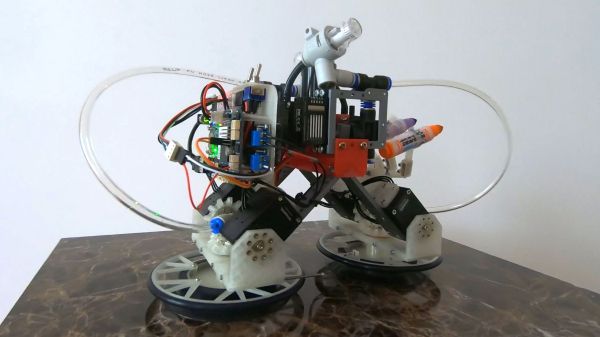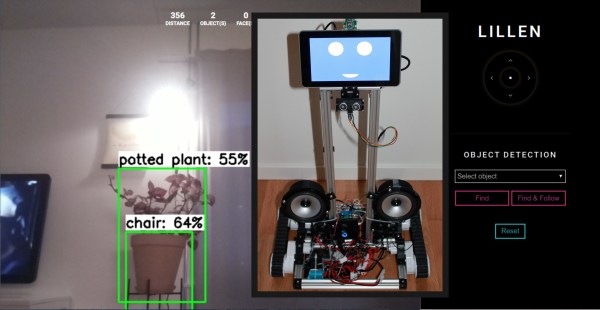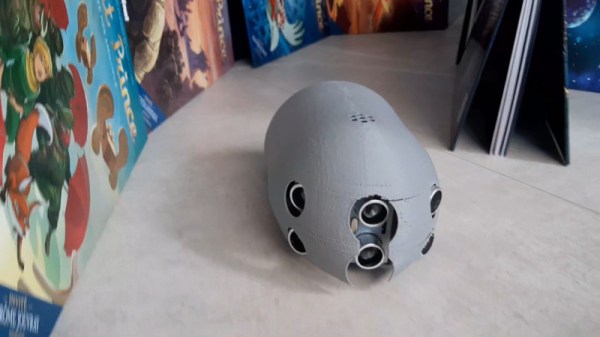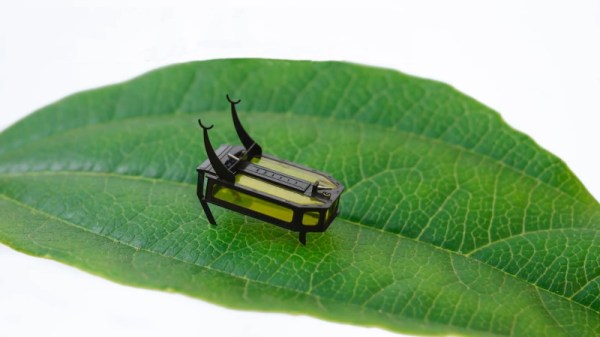Can it crawl? Can it climb? Can it roll? Can it skate? Can it draw? Naminukas by [Mykolas Juraitis] can do all of those things, and it is the size of a winter boot. Roving robots generally fall into one locomotion category, and the fanciest are amphibious. We categorize this one as transforming between three modes.
The first mode is like an inch-worm and a robot arm. Using a vacuum cup at the hub of each wheel, it sticks one end to the ground then heaves itself in the direction it wants to go and repeats. Its second form is a two-wheel balancing robot, which is the fastest configuration, and it can even carry things on its suckers. For the finale, it can hybridize all the tricks and use a camera dolly like a skateboard. One end sticks to the dolly, and the other is a propulsion wheel.
Naminukas is not just about scooting around the floor, because it can use tools with enough dexterity to write legibly on a whiteboard, climb walls, and even move around the ceiling. If these become sentient, there will be no place to hide, except a room with shag carpet, and is that any way to live?
We enjoy multi-terrain vehicles from soaring seaplanes to tidal tanks.
Continue reading “Ultra-Mobile Little Robot Will Climb The Walls”




















